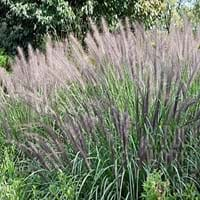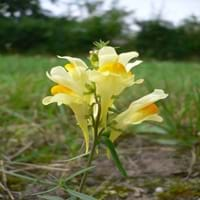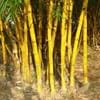Life Span
Perennial
Perennial
Origin
Eastern Asia, Australia
Europe
Types
Not Available
Linaria purpurea, Linaria maroccana, Linaria dalmatica
Number of Varieties
Not Available
Habitat
Grassland, open forests, wastelands, Wet lands
Dappled Shade, hedge rows, Shady Edge, Sunny Edge, Woodland Garden
USDA Hardiness Zone
5-9
2-9
Sunset Zone
3a, 3b, 4, 5, 6, 7, 8, 9, 10, 11, 12, 13, 14, 15, 16, 17, 18, 19, 20, 21, 22, 23, 24
Not Available
Habit
Clump-Forming
Spreading
Flower Color
Ivory, Rose, Tan
Yellow, Orange, Light Yellow, Ivory
Flower Color Modifier
Bicolor
Bicolor
Fruit Color
Sandy Brown, Tan
Green, Tan
Leaf Color in Spring
Green, Light Green
Light Green
Leaf Color in Summer
Light Green
Light Green
Leaf Color in Fall
Green, Light Green, Tan
Light Green
Leaf Color in Winter
Tan, Sandy Brown
Light Green
Leaf Shape
Conduplicate
Simple lobed or unlobed
Plant Season
Spring, Summer, Fall, Winter
Spring, Summer, Fall
Sunlight
Full Sun, Partial Sun
Full Sun
Type of Soil
Clay, Loam, Sand
Loam, Sand
The pH of Soil
Acidic, Neutral, Alkaline
Acidic, Neutral, Alkaline
Soil Drainage
Well drained
Well drained
Bloom Time
Summer, Late Summer, Early Fall, Fall, Late Fall
Late Spring, Early Summer, Summer, Late Summer, Early Fall
Tolerances
Drought
Drought
Where to Plant?
Container, Ground, Pot
Ground
How to Plant?
Divison, Seedlings
Divison, Seedlings
Plant Maintenance
Medium
Medium
Watering Requirements
occasional watering once established
Average Water Needs, Do Not over Water, Requires regular watering
In Summer
Lots of watering
Lots of watering
In Spring
Moderate
Moderate
In Winter
Average Water
Average Water
Soil pH
Acidic, Neutral, Alkaline
Acidic, Neutral, Alkaline
Soil Type
Clay, Loam, Sand
Loam, Sand
Soil Drainage Capacity
Well drained
Well drained
Sun Exposure
Full Sun, Partial Sun
Full Sun
Pruning
Remove damaged leaves, Remove dead branches, Remove dead leaves
Remove damaged leaves, Remove dead branches, Remove dead leaves
Fertilizers
All-Purpose Liquid Fertilizer
All-Purpose Liquid Fertilizer
Pests and Diseases
eyespot, Leaf spot, Rust
Red blotch
Plant Tolerance
Drought
Drought
Flower Petal Number
Single
Single
Foliage Texture
Fine
Fine
Foliage Sheen
Glossy
Matte
Attracts
songbirds
Wildlife
Aesthetic Uses
Borders, Ground Cover
Showy Purposes
Beauty Benefits
Not Available
Good for skin, Skin Problems
Environmental Uses
Air purification
Air purification
Medicinal Uses
Not Available
Antiphlogistic, Astringent, Boils, cathartic, Diuretic, Enteritis, Hepatic, Homeopathy, Jaundice, Liver problems, Ophthalmic, Piles, Purgative, Skin Disorders
Part of Plant Used
Seeds
Flowers, Leaves
Other Uses
Used like flour
Used as an insecticide, Used to make yellow dye
Used As Indoor Plant
No
No
Used As Outdoor Plant
Yes
Yes
Garden Design
Dried Flower / Everlasting, Bedding Plant, Container, Cutflower, Feature Plant, Foundation, Groundcover, Mixed Border, Rock Garden / Wall
Not Available
Botanical Name
PENNISETUM alopecuroides
LINARIA vulgaris
Common Name
Chinese Fountaingrass, Fountaingrass
Common toadflax, Yellow toadflax, Butter-and-eggs
In Hindi
Fountaingrass
Butter and Eggs plant
In German
Fountaingrass
Butter und Eier Pflanze
In French
Fountaingrass
Beurre et œufs plante
In Spanish
Fountaingrass
La mantequilla y la planta de huevos
In Greek
Fountaingrass
Βούτυρο και φυτών Αυγά
In Portuguese
Fountaingrass
Manteiga e Ovos planta
In Polish
Fountaingrass
Masło i jajka roślin
In Latin
Fountaingrass
Butyrum, ova , et herba
Phylum
Magnoliophyta
Magnoliophyta
Class
Liliopsida
Magnoliopsida
Order
Cyperales
Scrophulariales
Family
Poaceae
Scrophulariaceae
Clade
Angiosperms, Commelinids, Monocots
Angiosperms, Asterids, Eudicots
Tribe
Paniceae
Antirrhineae
Subfamily
Panicoideae
Not Available
Number of Species
Not Available
Season and Care of Fountaingrass and Butter and Eggs
Season and care of Fountaingrass and Butter and Eggs is important to know. While considering everything about Fountaingrass and Butter and Eggs Care, growing season is an essential factor. Fountaingrass season is Spring, Summer, Fall and Winter and Butter and Eggs season is Spring, Summer, Fall and Winter. The type of soil for Fountaingrass is Clay, Loam, Sand and for Butter and Eggs is Loam, Sand while the PH of soil for Fountaingrass is Acidic, Neutral, Alkaline and for Butter and Eggs is Acidic, Neutral, Alkaline.
Fountaingrass and Butter and Eggs Physical Information
Fountaingrass and Butter and Eggs physical information is very important for comparison. Fountaingrass height is 60.00 cm and width 60.00 cm whereas Butter and Eggs height is 75.00 cm and width 30.00 cm. The color specification of Fountaingrass and Butter and Eggs are as follows:
Fountaingrass flower color: Ivory, Rose and Tan
Fountaingrass leaf color: Green and Light Green
Butter and Eggs flower color: Yellow, Orange, Light Yellow and Ivory
- Butter and Eggs leaf color: Light Green
Care of Fountaingrass and Butter and Eggs
Care of Fountaingrass and Butter and Eggs include pruning, fertilizers, watering etc. Fountaingrass pruning is done Remove damaged leaves, Remove dead branches and Remove dead leaves and Butter and Eggs pruning is done Remove damaged leaves, Remove dead branches and Remove dead leaves. In summer Fountaingrass needs Lots of watering and in winter, it needs Average Water. Whereas, in summer Butter and Eggs needs Lots of watering and in winter, it needs Average Water.





